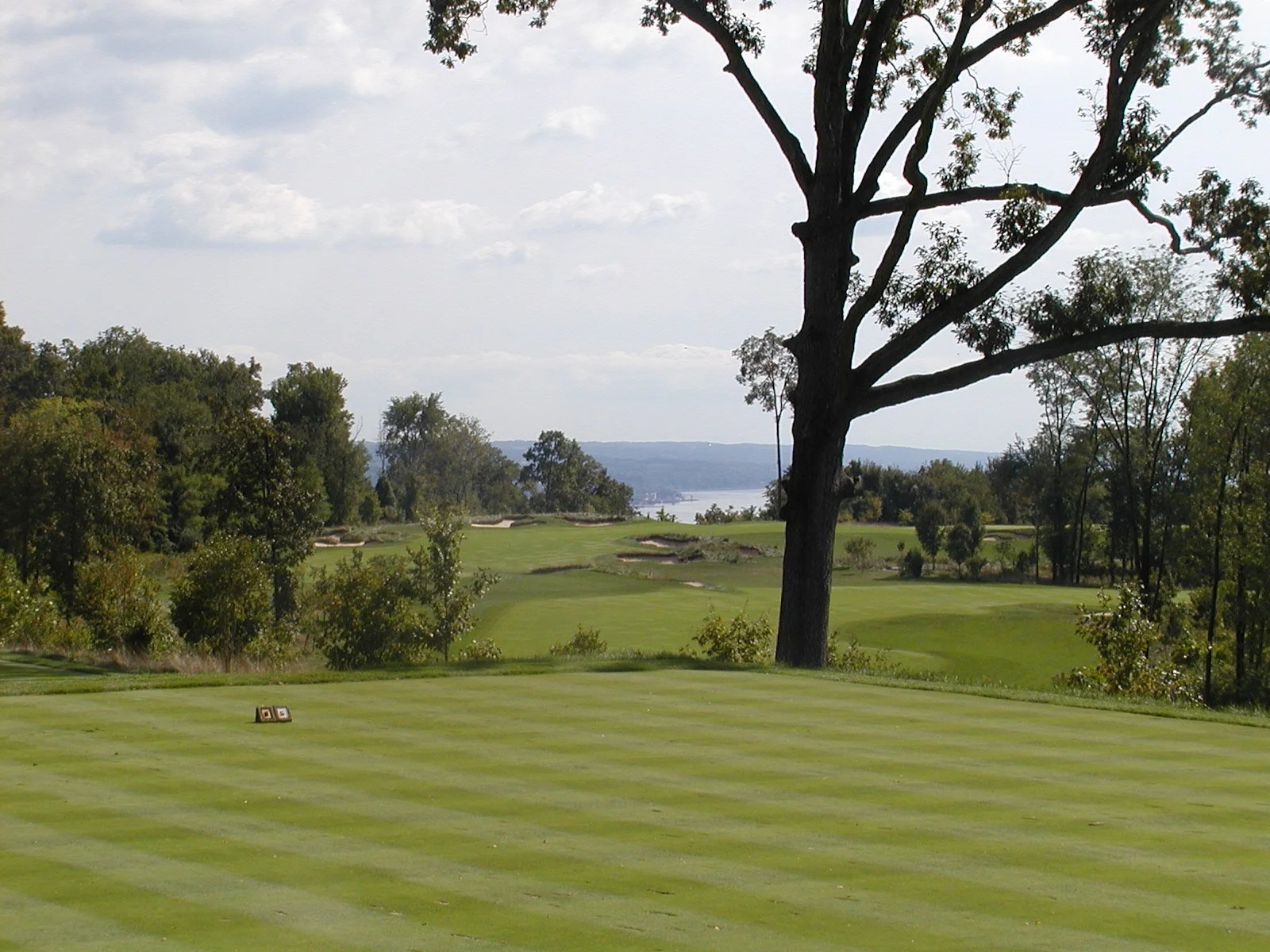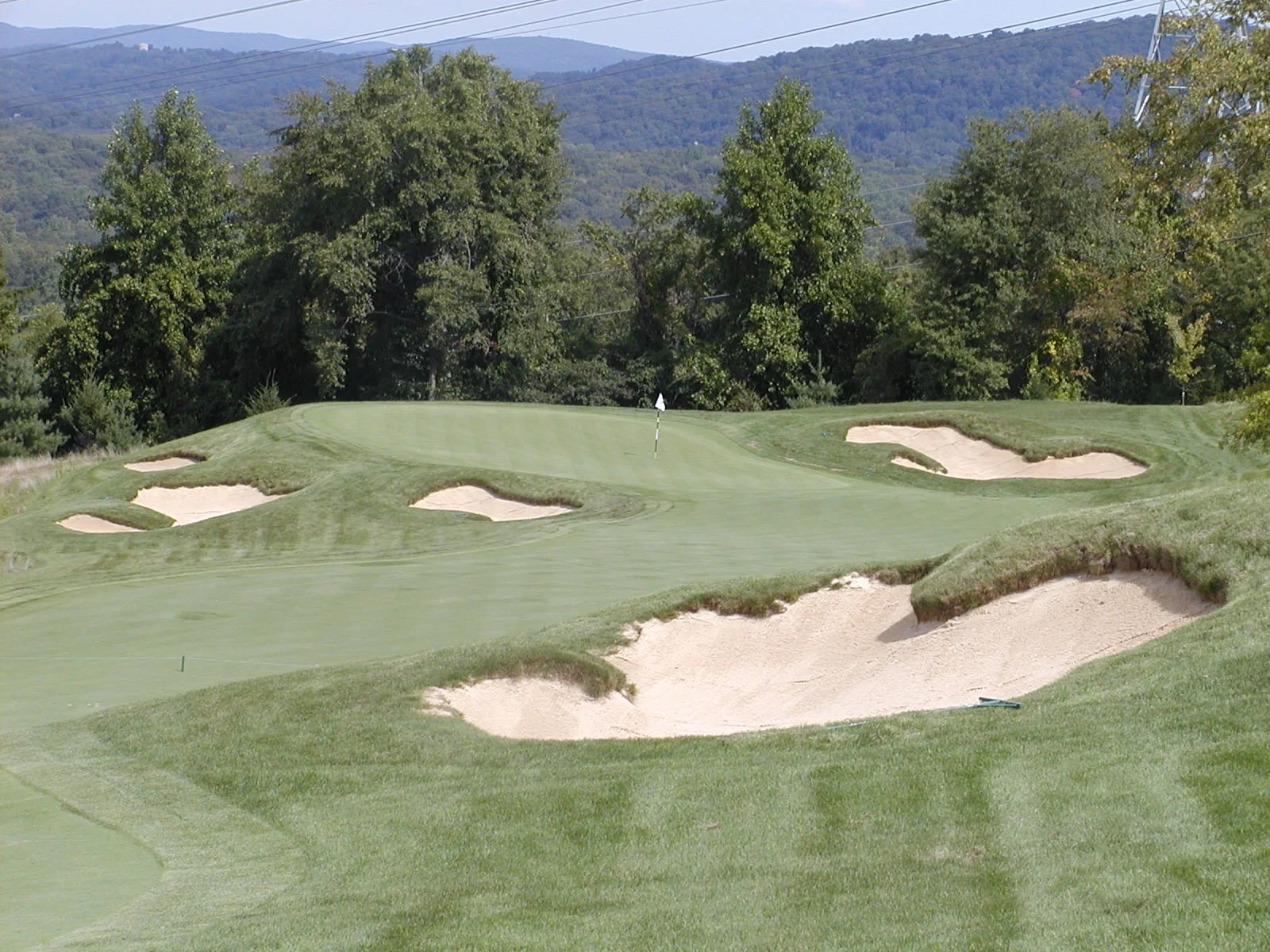HUDSON NATIONAL Golf club
Course Architect: Tom Fazio
Year Opened: 1996
Location: Croton On Hudson, New York
Slope: 145. Rating: 74.8
Par: 70
Yardage: 7,101
Hole-by-Hole: 1 - Par 4 488 Yds 10 - Par 4 428 Yds
2 - Par 3 213 Yds 11 - Par 3 174 Yds
3 - Par 4 431 Yds 12 - Par 4 511 Yds
4 - Par 4 388 Yds 13 - Par 3 193 Yds
5 - Par 4 427 Yds 14 - Par 5 545 Yds
6 - Par 5 576 Yds 15 - Par 4 443 Yds
7 - Par 4 385 Yds 16 - Par 3 251 Yds
8 - Par 3 256 Yds 17 - Par 4 339 Yds
9 - Par 5 554 Yds 18 - Par 4 499 Yds
Par 36 3,718 Yds Par 34 3,383 Yds
Awards Won: Ranked 90th by Golf Digest America's 100 Greatest (2013-14).
Key Events Held: METPGA Championship (2002),
MET GAP Match Play (2001, 2019), MET Open (2004),
Project A.L.S Celebrity Golf Classic (2001-2002).
Website: hudsonnational.org.
HISTORY: The land that makes up Hudson National Golf Club was of great strategic importance during the Revolutionary War. General George Washington and his troops were afforded outstanding views of the Hudson River as the British Fleet made its trek up the river from New York City.
The area was originally occupied by the Kitchawank Indians in 1609, as Henry Hudson first
sailed on his namesake river. The facility consists of 260 acres perched above the Hudson, the second highest elevation in Westchester County.
The clubhouse, circa 1850, is a beautiful stone-walled manor house, renovated in 1998.
Famed golf course architect Tom Fazio was commissioned to design a masterpiece and the result was, as you'll read, amazing. The course also features environmental areas on four holes and many rock walls and ruins throughout the venue. The ruins are part of an old clubhouse from a previous
9-hole golf course built in the 1920s. Rumor has it that the clubhouse was burned down during the stock market crash.
The course sits just 40 miles from New York City and is considered one of Fazio’s finest work. Two years later after opening in 1996, the clubhouse renovations were completed, and the clubhouse was fully operational. This spectacular site, the second highest elevation in Westchester County, consisted of two hundred and sixty acres, which are dedicated to the club's eighteen-hole course, practice areas, clubhouse, and club cottages.
REVIEW: Most courses start you off with a relatively easy hole to get the round going, not Hudson National. A gigantic par-4 of 486 yards, slightly downhill, awaits the player right out of the box. A big tee shot is needed to reach the crest of the fairway, leaving a long iron or fairway metal to a 44-
yard deep green that slopes back to front with a ridge in the middle of the surface. Miss left and a large c-shaped bunker, positioned below the green, will gobble most shots.
The first of five outstanding par 3's, the second, features a fairly small green that slopes right to left and back to front with a bunker long and short. From the back tee, which is 50 yards behind the
white, the player's view of the right side of the green is slightly blocked out by the hillside.
Finally, a breather as you step to the third tee. A wide fairway will narrow, depending upon which club is used off the tee. A solid three-wood will leave a short approach to a downhill lima bean shaped green that's guarded with four bunkers.
The fourth is one of the shorter par fours on the course, but plays uphill all the way to a long green, 42 yards deep. Miss right and you'll have a deep bunker to contend with; miss left and an old
chimney from the previous clubhouse could leave you blocked out from the green.
The back box on the fifth shares the tee with part of the practice range, which gives the player his first view of the Hudson River, which stands behind the player. This dogleg right par four plays downhill off the tee, but not on the second shot, as the lay of the land would suggest. The green is
long and narrow with sand right and grass swales left and short right.
The first par-five is a monster, 570 yards from the tips. This beauty gives the player a feel for Georgia, with its stately trees left and right and a large lake that's visually intimidating off the tee. After a successful tee shot, the golfer is left with an uphill blind second shot to a hole that bends to
the left. A mid to long iron lay up will leave a wedge to a fairly easy green, a definite birdie chance. Even if you make par or worse, your second glimpse of the Hudson will ease your pain.
Another chance for birdie, the seventh, is an easy hole which features a large landing area. A solid tee shot will leave a short iron to a small green with a trio of bunkers right and one left. It's time to bear down, if you haven't already.
The eighth is a par-three cut out of the woods, reminiscent of South Carolina. A carry of 225 yards over marshland is required, just to reach a landing area short of the green. The putting surface has a hollow in the middle with a plateau front and back. Making par here will be quite an accomplishment.
The front nine concludes with a dog-legging left par five of 551 yards. Don't let the yardage scare you, this hole can be had with three solid shots.
Standing on the 10th tee once again gives another outstanding view of the Hudson. Playing into the wind, this par-4 features a fairway that angles to the left, leaving a small target to hit from an elevated tee box. Miss the fairway left and a lateral marshland awaits, while right are two massive
bunker complexes. A mid iron is left to an uphill green guarded by a somewhat unfair bunker, with a grass mound in the center, fronting the green. Hitting the green will leave a birdie chance, as this surface is one of the flattest on the course.
The 11th is the shortest hole on the course, just 175 yards from the back box. The green is hourglass in shape and is two-tiered and long, making club selection a key. Short and left will leave the player in a chipping area, making it difficult to get up and down, while right, a deep bunker awaits.
The 12th is called a swing hole at Hudson National, as it can be played as a par five (500 yards) or a stern four par at 475 yards. The hole bends strongly to the left with bunkers guarding the corner. Ranked as the second-most difficult hole on the course, your second shot will be a long iron or fairway metal to a small green, just 29 yards deep. The good news, if there is some, is the putting surface is flat.
The 13th requires proper club choice, as a right to left wind can play havoc on this par three. Trouble here is missing right, as the side of the green drops off dramatically, leaving a possible blind chip back up the hill.
The final par five is the 14th at just 534 yards. Don't be fooled, this is not a hole to be overlooked. After a strong tee shot, the golfer has an option, should I stay or should I go. The hole swings right and downhill with water guarding the right side from 100 yards in. The smart play would be to lay up with a mid iron, leaving a sand wedge to a simple green to set up birdie. If you haven't been convinced by now that Hudson National is something special, well the final four holes will change your mind.
The 15th tee boxes are carved into the side of a rock formation. The hole plays into the wind, so a big drive is needed to carry the 220 yards required to reach the fairway. Your approach shot will be long and uphill to a green that slopes from back to front. Don't miss long or right, as getting up and down from the sand or the rough will be difficult.
The signature hole, as every hole at HNGC could be, is another gargantuan par three at 249 yards downhill and into the wind. This hole features one of the finest views on the course, with the Hudson River in its full glory as well as the Tappan Zee Bridge in the distance.
At first glance, the 17th looks like a simple hole at 328 yards. But this par four plays uphill all the way with bunkers guarding the left side of the fairway. The green is protected by three sand traps with a stone wall behind and right. If the pin is placed up front, then play to the center of the green, as the surface drops off and your approach shot will roll back down the fairway.
As you reach the 18th tee, you'll need to take a deep breath, as I'm sure your caddie will, as the stroll
that you have taken has most definitely tired you out. Your not done, as the final hole, just like number one which parallel's the 18th, is 481 yards long. The good news, you get one more look at the Hudson; the bad news, you need a big one. Although the fairway is wide, a big bomb from the elevated tee box is needed just to leave yourself with a long iron or fairway metal to the green. To make matters worse, your second shot is uphill and into the wind. And by the way, the green slopes severely from back to front.
FINAL THOUGHTS: Oh my!!!
This is one of those courses that no one outside of the state of New York probably knows about, but soon will. Fazio carved a great track in the hills of the Hudson River which could turn out to be one of his greatest masterpieces. From top to bottom, from grass to sand, from clubhouse to halfway house, this golf course is perfection at its best.
No expense was spared as the condition of this venue is second to none. The tee boxes alone are better than most greens around the country. As with all Fazio designs, the player is awarded many options, especially with the tee boxes, with as many as six on some holes, and the generous landing areas. 7,100 yards and change, a pushover, forget about it. This course has everything and more.
Yes, Fazio designed Black Diamond in Florida, Wade Hampton in North Carolina, Las Vegas' Shadow Creek, Caves Valley in Baltimore, the River Course at Kiawah Island, Estancia in Scottsdale and Sand Ridge in Ohio, just to name a few, but Hudson National Golf Club will soon take its place among the elite golf clubs in the United States.
Joining Hudson National might not be the easiest thing to do. The price tag is intense at over $100,000 in initiation dues, but so what, if you got it...spend it!
















